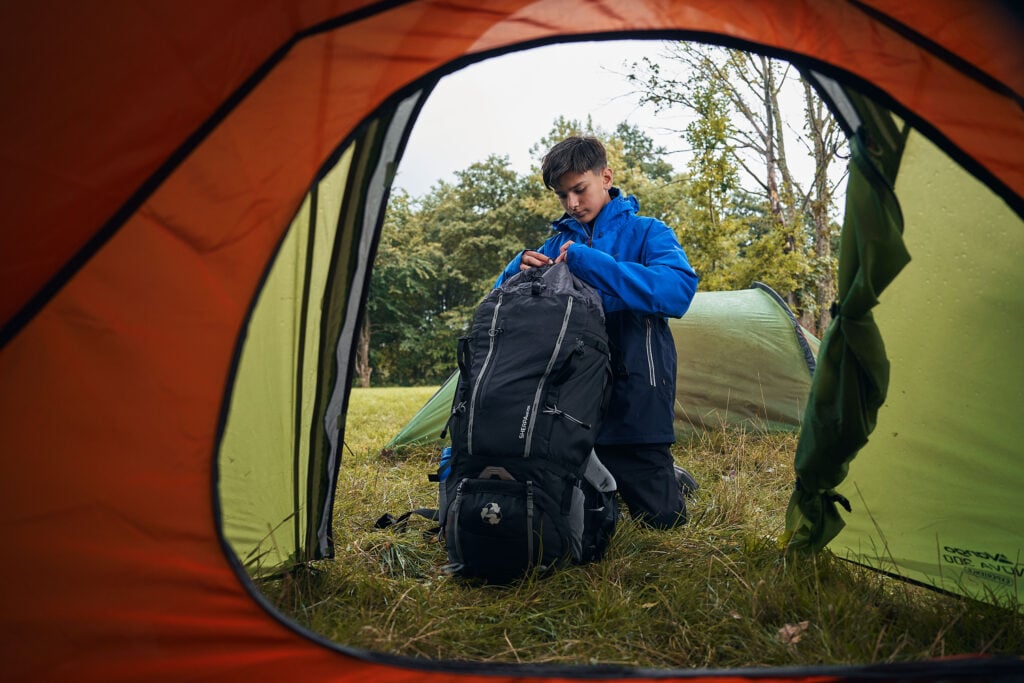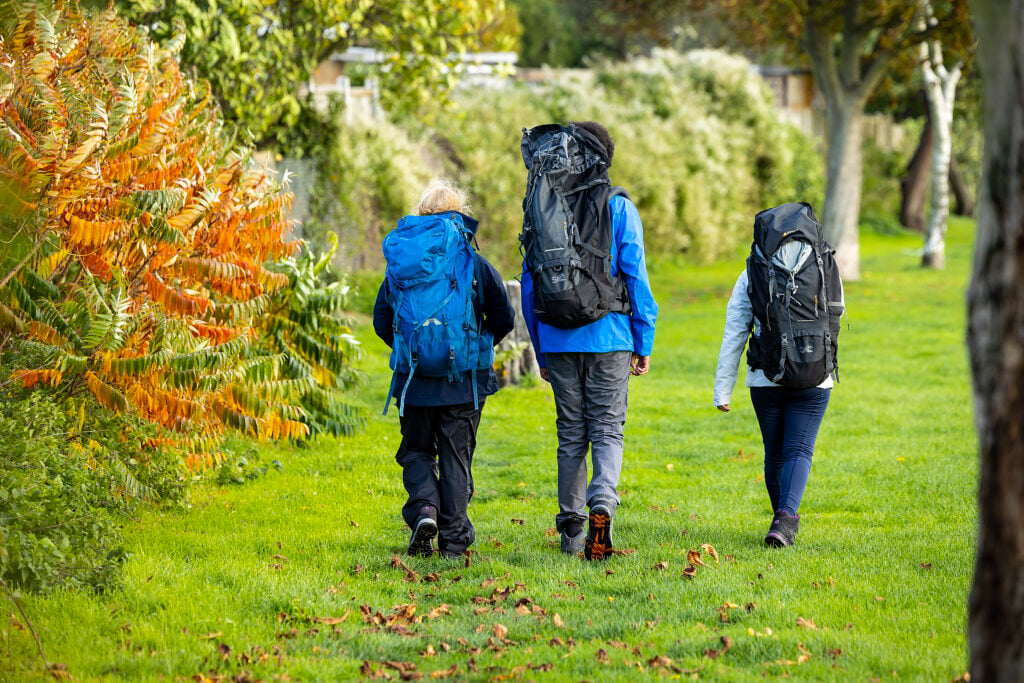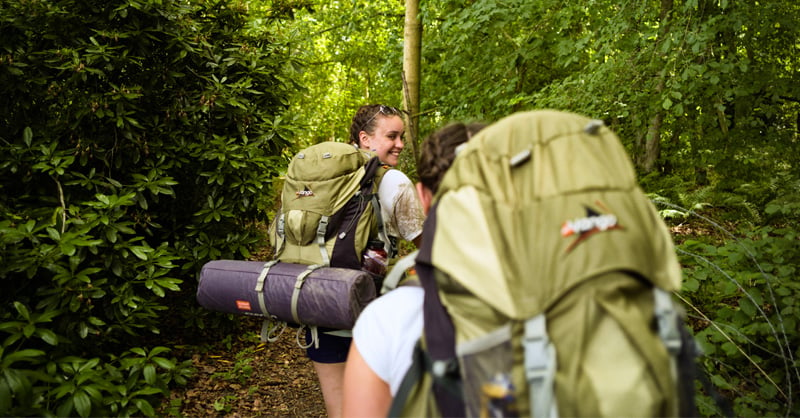How to pick and pack your DofE rucksack

Sponsored by Vango, DofE recommended rucksack partner
Choosing the right rucksack for your expedition is very important. Get it right, you’re good to go! Get it wrong, and you could be in for a long, uncomfortable journey. That’s why we’re here to help – we’ve compiled our best rucksack advice into one, to help make your expedition easier. We’ve even got some great rucksack recommendations to help you choose the best one for you!
Before you set off on your expedition, here are some things that you’ll need to consider:
Decisions, decisions…
There are so many different expedition rucksacks to choose from that finding the right one for you can start to feel slightly overwhelming, so let’s break it down.
Modern rucksacks are made from lightweight fabric, with lots of padding and pockets – some even have narrow straps for smaller people. They’re sized in litres and for a DofE expedition, you’ll want at least 60 litres (maybe even more for the Silver and Gold Awards).
DofE recommended rucksacks from Vango come in a variety of styles so you find one the best option for your expedition. One of our favourites is the Vango Sherpa rucksack! It comes in a range of sizes so you can choose the best option for your expedition.
Also, just like a good pair of jeans or some new shoes, your rucksack needs to fit you.
Top tip: If possible, purchase your rucksack in-store so that you can try it on first and get a feel for which rucksack is the perfect fit before you buy. Why not pop into your local GO Outdoors store and try one on for size.
Extra features
All DofE recommended rucksacks come with adjustable back systems as well as padded, breathable waist and shoulder straps, and hi-vis waterproof covers.
If you are using a different rucksack, make sure you know it will keep dry.
Top tip: use a large dry bag or rubble bag inside the rucksack to help keep everything dry.
Our favourites are the Lifeventure dry bags! They come in a wide variety of colours and sizes so you can find the right one for you and your kit.

Practice packing your kit
Whether you’re trying to fit in a few extra snacks or rummaging to find your last pair of clean socks at the bottom of your bag, your expedition is going to require a lot of packing and unpacking!
Before you set off, make sure you practice packing you kit away at least once so that you know the best ways to organise all of the kit that you’ll need to bring with you.
Top tip: We suggest no more than 25% of your body weight for the weight of your rucksack and kit inside – speak to your DofE Leader if you are worried your pack is too heavy.
Check out our free handy ‘pack your rucksack’ poster that shows exactly where to put each bit of kit for the optimum rucksack packing experience! For even more advice on packing your rucksack, this rucksack packing poster explains WHY kit should go where, and what kit we recommend.
Here are some tips for during your expedition:
Water, snacks, map, headtorch, first aid kit – all of these items are essential to a smooth, comfortable expedition. Make sure you keep these near the top of your rucksack so that you can access them whenever you need them. Anything you think will be important or may come in handy, keep it near the top!
Top tip: store sun cream in a sealable bag to avoid leakage and keep near the top to regularly reapply.
UK weather can be temperamental, so don’t get caught out by the wind and rain. Keep yourself comfortable with a warm, dry piece of clothing that you can access at a moment’s notice – DofE recommended Craghoppers fleeces are lightweight and dry quickly.
And lastly, here are some things that you’ll need to think about after your expedition:
Keep it dry
The last thing you want after getting back from your DofE expedition is mouldy kit. That’s why it’s so important to dry out your DofE rucksack before storing it away. You can also protect your rucksack from the elements with a rucksack cover from our official DofE Merchandise range!
Keep it clean
Chances are, your rucksack probably got a bit dirty on your expedition! And that’s okay – we just have to make sure we give it a clean once we get back. Nikwax Tent and Gear Solarproof is perfect for prepping and maintaining your DofE rucksack, before and after your expedition.
Top tip: It’s also a good idea to cover your rucksack with a cover/bin bag to protect your rucksack from dust and dirt when storing.

For even more advice on choosing a rucksack for your expedition, visit our rucksacks and packing page – you’ll even find our DofE recommended rucksacks and money saving tips.
Finding the right rucksack for you is an ongoing journey of discovery. There are lots of factors that go into it, so make sure you take the time to weigh your options and find the perfect rucksack that works for you!
All in all, your rucksack is important – take care of it and it will take care of you! And remember, you can get at least 10% off DofE recommended Vango rucksacks with a DofE Card. Find out how you can start saving here.


